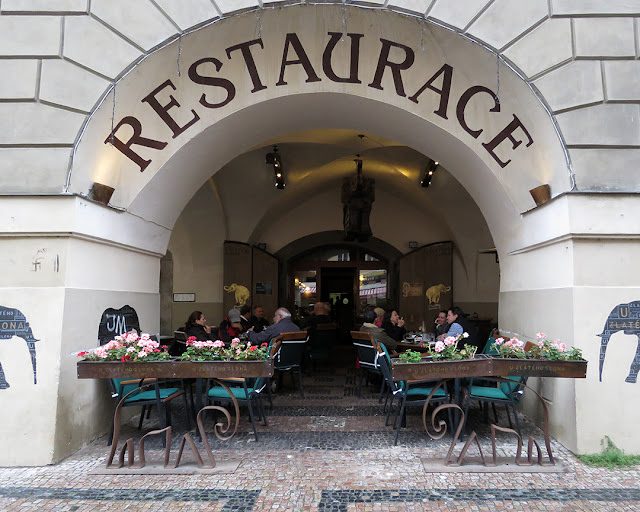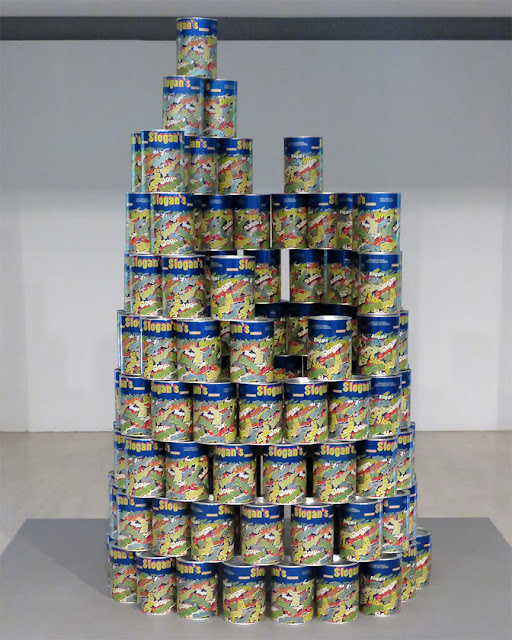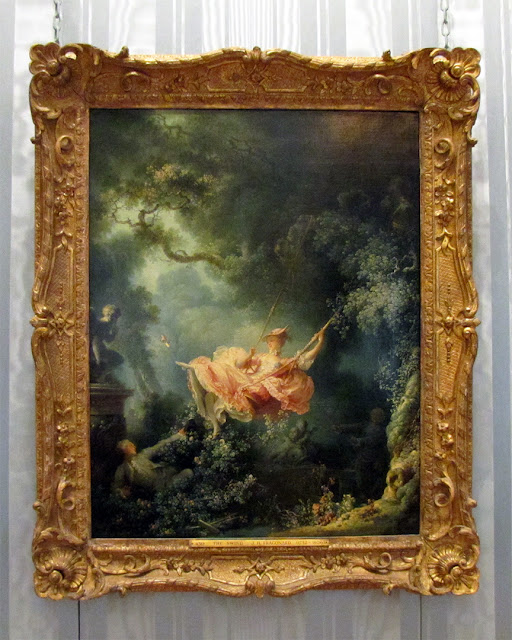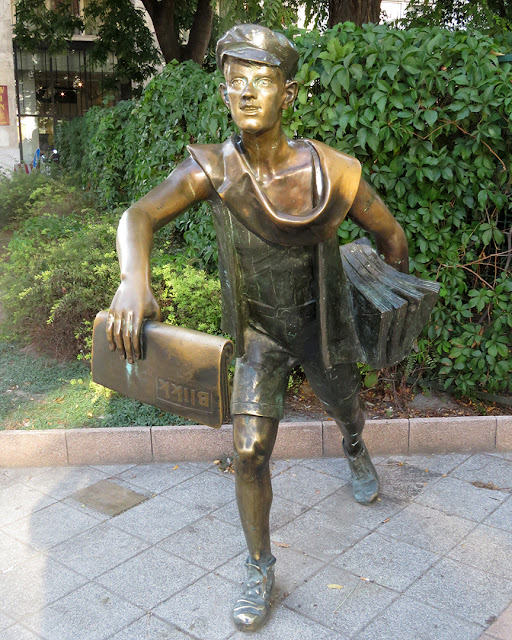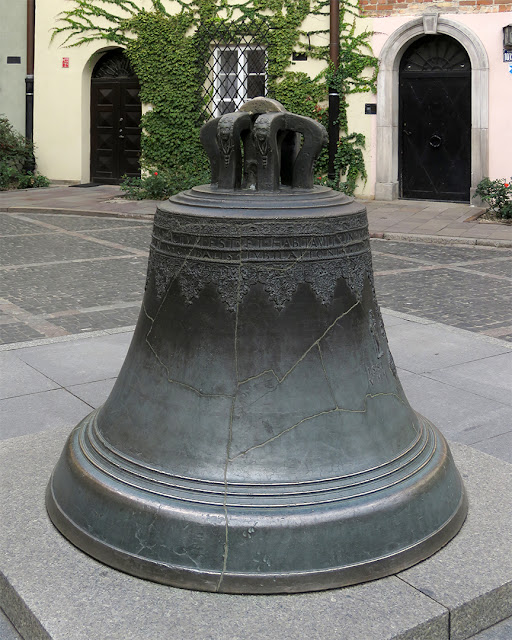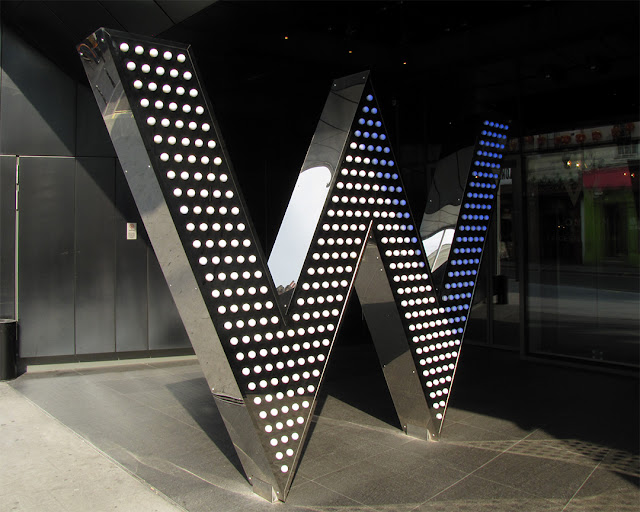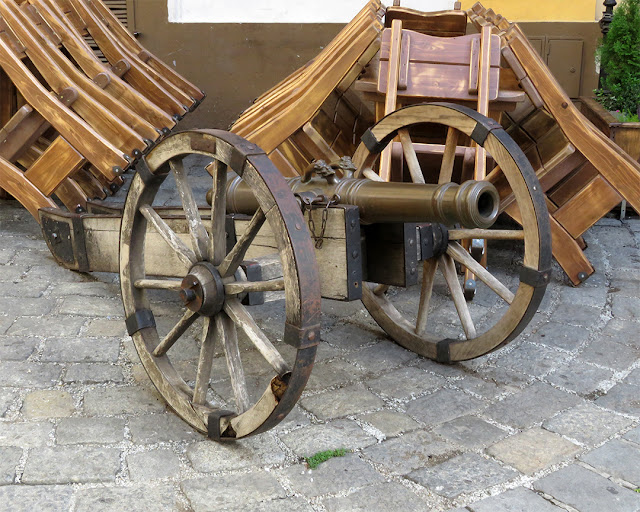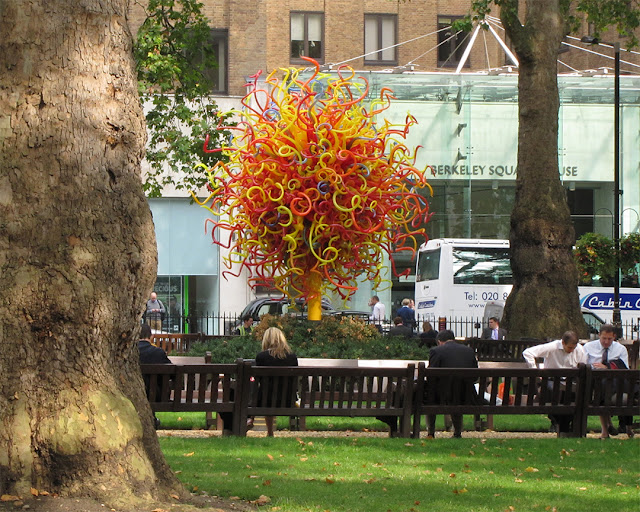Tuesday, May 31, 2022
U Zlatého slona
U Zlatého slona (The Golden Elephant)
Havelska
Staré Město (Old Town)
Prague, September 2017
“If you appear to be near Galerie Dolls Land, you can visit this restaurant. Czech dishes are on the menu at U Zlatého slona. To order nicely cooked pork hock, beef goulash and cheese bread is a truly nice idea. You will be offered good che, parfait and strudels. It is good to try delicious beer, wine or cider. Great coffee is the best drinks of this place. The intimate atmosphere of this spot allows guests to relax after a hard working day. The well-trained staff welcomes visitors all year round. The enjoyable service is something these restaurateurs care about. You will like average prices. This restaurant can be featured by the divine decor inside. Google users are quite generous with U Zlatého slona: it was granted 4.4 stars.” (Pivnice ‘U zlatého slona’, Restaurant Guru)
Monday, May 30, 2022
Sunday, May 29, 2022
Chapel of St. Nicholas of Tolentino
Chapel of St. Nicholas of Tolentino, 1599
by Vincenzo Conti, Andrea Lilio and Giovan Battista Ricci
Basilica of St. Augustine in Campo Marzio
Piazza di Sant’Agostino
Rome, June 2019
“The ancient chapel, already known to have existed in 1448, was granted in 1582 to the conte Vincenzo Tuttavilla, who entrusted the project for its architectural renovation and stucco decoration to the little-known Giovan Battista Cavagna in the immediately following years. The count, however, was embarrassed by financial difficulties, as attested by some documents. The result was that by 1588 the decoration of the vaulted ceiling still remained incomplete. The parts of its fresco decoration that had already been completed by this time were three figures of ‘Doctors of the Church’ by Andrea Lilio and ‘Stories of St. Nicholas of Tolentino’ (and perhaps the remaining ‘Doctor of the Church’) by Vincenzo Conti. The decoration of the chapel was then interrupted for ten years, and the chapel remained closed. In 1597, the Augustinian Fathers began a court action against the heirs of the conte Tuttavilla, with the result that sums of money were confiscated from them for the completion of the chapel’s decoration. But, despite that, the situation remained substantially unchanged until 1614, when the heir Maria Tuttavilla finally renounced all rights over the chapel. From that time onwards the Augustinian Fathers themselves assumed the cost of the enterprise. In 1615 they commissioned Giovan Battista Ricci from Novara to fresco the large lunettes of the side walls with a further two ‘Stories of St. Nicholas of Tolentino’, flanked by figures of Virtues.” (The Chapel of St. Nicholas of Tolentino in Sant’Agostino in Rome, Bollettino d'Arte)
Saturday, May 28, 2022
Biatec Monument
Biatec Monument by Ľudmila Cvengrošová, 1988
Národná banka Slovenska (National Bank of Slovakia)
Imricha Karvaša
Staré Mesto (Old Town)
Bratislava, September 2017
“It’s unclear who Biatec was. The name appears on the coins that circulated among the Celtic tribe of the Boii, minted in what is present-day Bratislava around 60-40 B.C. These rare ancient coins are also referred to as Biatec (or Biatex) by modern scholars. Although this has not been confirmed, it was likely the name of the leader of the tribe. Generally sizing 25 millimeters (just under an inch) in diameter and weighing about 17 grams, the silver coins were equivalent of Hellenistic hexadrachms or tetradrachms, which they are believed to have imitated. Fourteen hoards consisting of these coins were unearthed in the 20th century, six of them in Bratislava. The obverse usually showed a bust or two facing right, while the reverse was a horseman or an animal, both mythological and real, such as the griffin, lion and boar. Under the reverse figure was an inscription in capital Latin letters. There are 14 known types of inscriptions, but the one that appears the most frequently was BIATEC, sometimes shortened to BIAT. Although rather obscure internationally, the Biatec coin has become a sort of icon in Slovakia. From 1993 to 2008, its design was featured on the five-Slovak koruna coin, and even today, the horseman can be seen on the National Bank of Slovakia’s logo. In 1988, a bronze monument shaped after and commemorating the Biatec coin was created by sculptress Ľudmila Cvengrošová. More than a hundred times larger than its real-life counterpart, the monument was 3 meters (10 feet) in diameter and weighed 3 tons. It was relocated in front of the National Bank of Slovakia in 2008, one month before the country’s transition from the Slovak koruna to euro.” (Biatec Monument, Atlas Obscura)
Friday, May 27, 2022
The Swing
The Swing (L'Escarpolette) by Jean-Honoré Fragonard, 1767
Wallace Collection
Manchester Square, Marylebone
London, September 2016
“The Swing (French: L'Escarpolette), also known as The Happy Accidents of the Swing (French: Les Hasards heureux de l'escarpolette, the original title), is an 18th-century oil painting by Jean-Honoré Fragonard in the Wallace Collection in London. It is considered to be one of the masterpieces of the Rococo era, and is Fragonard's best known work. The painting depicts an elegant young woman on a swing. A smiling young man, hiding in the bushes on the left, watches her from a vantage point that allows him to see up into her billowing dress, where his arm is pointed with hat in hand. A smiling older man, who is nearly hidden in the shadows on the right, propels the swing with a pair of ropes. The older man appears to be unaware of the young man. As the young lady swings high, she throws her left leg up, allowing her dainty shoe to fly through the air. The lady is wearing a bergère hat (shepherdess hat). Two statues are present, one of a putto, who watches from above the young man on the left with its finger in front of its lips in a sign of silence, the other of pair of putti, who watch from beside the older man, on the right. There is a small dog shown barking in the lower right hand corner, in front of the older man. According to the memoirs of the dramatist Charles Collé, a courtier (homme de la cour) first asked Gabriel François Doyen to make this painting of him and his mistress. Not comfortable with this frivolous work, Doyen refused and passed on the commission to Fragonard. The man had requested a portrait of his mistress seated on a swing being pushed by a bishop, but Fragonard painted a layman.” (The Swing, Wikipedia)
Thursday, May 26, 2022
Wednesday, May 25, 2022
Albrechtsbrunnen
The Albrechtsbrunnen wall fountain, 1869
Albertinaplatz
Vienna, September 2017
“When the state decided to take down the Vienna fortifications in the 19th century and open up the area to development, the plan was to sell off some of the land for private construction projects and use the money for public ones. One of the projects so financed was a decorative Renaissance-style wall fountain and monument at the base of one of the few parts of the city walls that remained largely intact (presumably since a rather splendid palais – now the Albertina art museum – stood more or less on top of it). The fountain bears the name Albrechtsbrunnen, named for Archduke Albrecht (owner of that palais). However, locals also refer to it as the Danubiusbrunnen, because of the figure of Danubius at the centrepiece of the installation and the overarching Danubian theme. Unveiled in 1869 on Emperor Franz Joseph’s birthday, this long monument features allegorical figures for Vienna, the Danube river and major tributaries of the Danube that passed through imperial lands.” (The Albrechtsbrunnen wall fountain, Visiting Vienna)
Tuesday, May 24, 2022
Monday, May 23, 2022
St Thomas of Villanova
“Charity of St Thomas of Villanova” by Melchiorre Caffà and Ercole Ferrata, 1669
Basilica of St. Augustine in Campo Marzio
Piazza di Sant’Agostino
Rome, June 2019
“He was well known for his great personal austerity (he sold the straw mattress on which he slept in order to give money to the poor) and wore the same habit that he had received in the novitiate, mending it himself. Thomas was known as ‘father of the poor.’ His continual charitable efforts were untiring, especially towards orphans, poor women without a dowry, and the sick. He possessed, however, an intelligent notion of charity, so that while he was very charitable, he sought to obtain definitive and structural solutions to the problem of poverty; for example, giving work to the poor, thereby making his charity bear fruit.” (Thomas of Villanova, Wikipedia)
Sunday, May 22, 2022
Rikkancs
“Rikkancs” (Newsboy) by Szőke Lajos, 2012
Hild tér
Budapest, September 2017
“Hild Square is a nice and lively place in the 5th district, near Deák Ferenc square. It has a big playground, many benches to sit on, and a nice, easily accessible fountain. But our favorite part of this place is the statue of a newsboy: the sculptor said he was inspired by the boy who sold newspaper on Kálvin Square in the twenties. It totally brings that era back.” (Hild Square, BudNews)
Saturday, May 21, 2022
Mount Street Gardens Fountain
Detail of the drinking fountain by Ernest George, 1891
Mount Street Gardens
Mount Street, Mayfair
London, September 2014
“The multi tiered pedestal contains two demi-lune basins with lion mascarons which spout water. The pedestal is carved and molded in three forms with scroll consoles on each of the four sides. It is likely that metal cups were suspended on chains from these consoles. The capital supports the statue of a horse rearing above a wave which has been mistakenly referenced as a hippocamp (a mythological sea creature with the head and forelegs of a horse and the tail of a fish.) The tail is actually a regular horse tail. However, the front hooves of the statue are in the form of fins. A plaque on the north side of the basin states: This Fountain Was Erected By Henry Lofts In Recognition Of Many Happy Years In Mount Street. Sir Ernest George, R.A. Fecit. 1892.” (Mount Street Gardens Fountain, Memorial Drinking Fountains)
Friday, May 20, 2022
Fountain with sea monsters
Fountain with sea monsters by Pietro Tacca, 1629
(With Bernardino Radi and Francesco Maria Bandini)
Piazza della Santissima Annunziata
Florence, December 2021
“Two bronze fountains originally destined for Livorno (c. 1629), still in a highly Mannerist style indebted to Flemish Mannerist goldsmith's work for their grotesque masks and shellwork textures, were set up instead in Piazza della SS. Annunziata, Florence.” (Pietro Tacca, Wikipedia)
Thursday, May 19, 2022
Rossmann
Rossmann drug store
13 ulica Grobla I
Stare Miasto (Old Town)
Gdańsk, September 2018
“The Green Gate (Polish: Brama Zielona, German: former Koggentor, now Grünes Tor) in Gdańsk, Poland, is one of the city's most notable tourist attractions. It is situated between Long Market (Długi Targ) and the River Motława. With the Golden Gate and the Highland Gate, the Green Gate spans the Long Market and Long Street, together comprising the Royal Route. The Green Gate was clearly inspired by the Antwerp City Hall. It was built 1568-71 as the formal residence of Poland's monarchs. It is a masterpiece by Regnier (or Reiner van Amsterdam), an Amsterdam architect, and reflects Flemish architectural influence in Gdańsk. Hans Kramer from Dresden was responsible for the construction plans. On 11–20 February 1646 the future Queen of Poland, Marie Louise Gonzaga, was entertained here. In the late 18th century the Nature Society was housed here, but soon moved to the Naturalists' House (Research Society House). Today the Green Gate houses the National Museum in Gdańsk. Exhibitions, meetings, conferences and shows are held here. The Gdańsk office of former Polish President Lech Wałęsa is located in one of the rooms.” (Rossmann, Wikipedia)
Wednesday, May 18, 2022
O Cauteleiro
O Cauteleiro (The Lottery Ticket Seller) by Fernanda de Assis, 1987
Largo Trindade Coelho
Lisbon, April 2019
“Bronze statue of a cauteleiro, a lottery ticket seller. It was inaugurated on 18 November 1987, the day the National Lottery celebrated its 204th anniversary.” (O Cauteleiro, Statues - Hither & Thither)
Tuesday, May 17, 2022
Sant'Antonio dei Portoghesi
Sant'Antonio dei Portoghesi
Via dei Portoghesi
Rome, June 2019
“The church and hospice were closed in 1799 during Napoleon's occupation; the Portuguese government recovered the property in 1814. The hospice later became the Istituto Portoghese di Sant'Antonio in Roma which sponsors, language classes, conferences, and concerts.[4] The church's main organ is located on the balcony over the entrance. The barrel vault ceiling is stuccoed by Pompeo Gentile and frescoed by Salvatore Nobili. The interior is decorated in polychrome marble. The main altarpiece is Giacinto Calandrucci's 1707 The Virgin handing the Holy Child to St Anthony.” (Sant'Antonio dei Portoghesi, Wikipedia)
Monday, May 16, 2022
The Wishing Bell
The “Wishing Bell” by Daniel Tym, 1646
Kanonia
Stare Miasto (Old Town)
Warsaw, September 2018
“St John’s Cathedral in Old Town is a lovely little church; but more interesting is the tiny little square behind the church, called the Canon Square, which is home to an unusual monument. Overlooked by houses and apartment buildings, the square houses a massive bronze bell, called the Wishing Bell of Warsaw, made in 1646. It has been designed by the same artist who designed Sigismund’s Column, Daniel Tym. According to popular lore, people who circle the bell and make a wish have it come true. Interestingly, the bell itself has been polished to a fine sheen by people rubbing it.” (Wishing Bell of Warsaw, Times of India)
Sunday, May 15, 2022
W London
W London
Wardour Street, Soho
London, September 2014
“The entrance doesn't give much away, except for the huge W shape, but perhaps the hotel wants it to look like a club door, laid with carpet and rope barriers. Take the lift to the first floor and you'll find the lobby. W hotels pride themselves on their glitter-strewn, hedonistic vibe and Leicester Square’s outpost doesn't disappoint, with disco balls featured around every corner, blasts of Cool Britannia designs (signature plates, monochrome Union Jacks) adorning shelves and walls, an in-house club/bar livened with DJs, and an open restaurant. The Towie set have been known to frequent the place. It's ‘posh bling’ for socialites.” (W London - Leicester Square, The Telegraph)
Saturday, May 14, 2022
Balloon Monkey (Blue)
“Balloon Monkey (Blue)” by Jeff Koons, 2006
Palazzo Strozzi
Piazza degli Strozzi
Florence, December 2021
“The series of contemporary art exhibitions at Palazzo Strozzi continues with Jeff Koons Shine. Works by the renowned and controversial American artist will be on display from October 2 to January 30, 2022 in a major exhibition featuring over 30 of the artist’s most celebrated works from the mid-70s through to the present day. The courtyard of Palazzo Strozzi will host Balloon Monkey (Blue) 2006-2013, created from mirror-polished stainless steel with transparent colour coating.” (Jeff Koons ‘Shine’ at Palazzo Strozzi, The Florentine)
Friday, May 13, 2022
Dziórawy Kocioł
Dziórawy Kocioł (The Leaky Cauldron)
Grodzka
Stare Miasto (Old Town)
Kraków, September 2018
“Dziórawy Kocioł (The Leaky Cauldron) invites all practicing witches, warlocks and wizards-in-training to its underground realm full of magic and enchantments. This Harry Potter-inspired cafe offers its very own butterbeer (kremowy piwo), pumpkin juice and an array of other bubbling potions and frothing elixirs - all of which are non-alcoholic, and some of which actually include dry ice(!). There's also an enchanted pantry of pastries and desserts, plus more substantial fare like sandwiches and pierogi. Perfect for teens, familes or any pupil of Hogwarts, the staff keep a strict eye out for Muggles so you can practice your spells in peace, and there are boardgames galore, though one of the rooms may be haunted.... Host to occassional magic shows, the cafe also includes a small shop where you can purchase wizard wands, magical gadgets and witchy sweets, made no doubt from dragon tears and eye-of-newt. Bewitchin'.” (Dziórawy Kocioł, In Your Pocket)
Thursday, May 12, 2022
Wednesday, May 11, 2022
Saint Anthony with the Child Jesus
Saint Anthony with the Child Jesus
Sant'Antonio dei Portoghesi
Via dei Portoghesi
Rome, June 2019
“The national church of the Portuguese people was originally founded in 1445 at the behest of Cardinal Antonio Martinez de Chaves adjacent to a hospice for Portuguese pilgrims. The hospice, with a small chapel dedicated to Our Lady of Bethlehem, had been founded in the fourteenth century by the noblewoman Guiomar of Lisbon. It was rebuilt in 1638 to a design by Martino Longhi the Younger. The ribbed dome was designed by Carlo Rainaldi in 1674. Work on the facade continued under Cristoforo Schor in 1695. The stained glass window above the door depicts St Anthony with the Child Jesus.” (Sant'Antonio dei Portoghesi, Wikipedia)
Tuesday, May 10, 2022
Kaple Panny Marie Šancovní
Kaple Panny Marie Šancovní (Chapel of Virgin Mary within the Walls)
V Pevnosti, Vyšehrad
Prague, September 2017
“This small pilgrim Baroque chapel, built in 1750 was desecrated during reign of Emperor Joseph II. In 1892 was bought back from the state for religious purposes and reconstructed in neo-Renaissance style by architects Bedrich Münzberger and Antonín Baum. The name of the chapel ‘In the Wall / Šancovní’ is derived from the position of the building directly on the fortress' fortification wall. Chapel has square groundplan and chancel in shape of natural cave. Octahedral chaple's lantern has a copper cupola with Vyšehrad coat of arms.” (Kaple Panny Marie Šancovní, Waymarking)
Monday, May 9, 2022
Hylas Surprised by the Naiades
“Hylas Surprised by the Naiades” by John Gibson, 1827
Tate Britain
Millbank
London, September 2014
“This life-size statue group in white marble presents a scene from Greek mythology in which the boy Hylas, the companion of Hercules, goes to collect water from a stream, and is lured into the depths by water nymphs who are entranced by his beauty. The nymphs (Naiades) simultaneously gaze admiringly and move to physically detain the boy. The taller nymph places her face against Hylas’s hair and strokes his cheek while gently restraining his arm. The other places a hand around the boy’s waist and takes his hand in hers. Hylas seems to lose his grip on the pitcher in surprise. His extended leg suggests that he is trying to leave, although he also appears entranced by the naked naiad.” (Hylas Surprised by the Naiades, Tate)
Sunday, May 8, 2022
Pietà
“Pietà” (Piety) by Francesco Vezzoli, 2021
Piazza della Signoria
Florence, December 2021
“After his exhibition in the city in 2014, Francesco Vezzoli returns to Florence to take on its most symbolic places: Piazza della Signoria and Palazzo Vecchio, in the wake of a project that has seen famous international artists as protagonists in recent years. Piazza della Signoria hosts the work ‘Pietà’ (2021), a monumental twentieth-century rampant lion installed on an ancient base crushes the head of a Roman from the second century AD between its jaws in a pastiche between different artistic eras which has become the hallmark of many recent works by the artist.” (Francesco Vezzoli in Florence, Mousse Magazine)
Saturday, May 7, 2022
Friday, May 6, 2022
Paços do Concelho
Paços do Concelho de Lisboa (Lisbon City Hall)
Praça do Município
Lisbon, April 2019
“The Lisbon City Hall (Paços do Concelho de Lisboa) is the seat of the Lisbon municipal government. The building is located in the City Square (Praça do Município), Santa Maria Maior, Lisbon. It houses the Lisbon City Council. Built in the neoclassical style, its monumental façade features a large pediment over a central balcony with sculptures by Calmels, and four oculi. Inside, it has a remarkable central staircase, by the architect José Luís Monteiro, and paintings by several artists, like Pereira Cão, Columbano Bordalo Pinheiro, José Malhoa e José Rodrigues. The original city hall was built following plans by Eugénio dos Santos, during the reconstruction of the Baixa neighbourhood that followed the 1755 earthquake. On 19 November 1863, a fire completely razed the building. A new City Hall was built in the same location, with plans drawn by architect Domingos Parente da Silva, between 1865 and 1880. Since the 1930s and 1940s, the building had seen successive architectural additions, to the point where even a new floor was added over the rooftop. A new fire, on 7 November 1996, damaged the upper floors and the ornate painted ceilings of the first floor. Architect Silva Dias conducted an intervention plan to recover the building, and to bring it closer to Domingos Parente da Silva's initial plans.” (Lisbon City Hall, Wikipedia)
Thursday, May 5, 2022
Rione Sant'Eustachio
Rione Sant'Eustachio
Via di Sant'Agostino
Rome, June 2019
“Sant'Eustachio is the 8th rione of Rome, identified by the initials R. VIII. It is named after the eponymous church and is located within the Municipio I. Its coat of arms depicts the head of a stag with a cross between the antlers, symbol of Saint Eustace: the figure is golden on a red background.” (Sant'Eustachio, Wikipedia)
Wednesday, May 4, 2022
BücherBus
BücherBus (Book Bus)
Karlsplatz
Vienna, September 2017
“A bookmobile or mobile library is a vehicle designed for use as a library. They have been known by many names throughout history, including traveling library, library wagon, book wagon, book truck, library-on-wheels, and book auto service. Bookmobiles expand the reach of traditional libraries by transporting books to potential readers, providing library services to people in otherwise underserved locations (such as remote areas) and/or circumstances (such as residents of retirement homes). Bookmobile services and materials (such as Internet access, large print books, and audiobooks), may be customized for the locations and populations served.” (Bookmobile, Wikipedia)
Tuesday, May 3, 2022
The Sun
“The Sun” by Dale Chihuly, 2006(
Berkeley Square, Mayfair
London, September 2014
“A new public sculpture for London will be unveiled by Dale Chihuly on April 3rd in Mayfair's Berkeley Square. The 14 foot installation consists of more than 1,300 hand-blown glass elements, weighs 4,230 lbs. and will be installed over four days by members of Team Chihuly. The radiant globe of colour will be illuminated each night. The Sun has been on view in many prestigious museums and gardens around the world including the New York Botanical Garden (2006), de Young Museum (2008), the Salk Institute for Biological Studies (2010) and the Montreal Museum of Fine Art (2013). His outdoor sculptures engage individuals and communities and help to promote dialogue. Chihuly enjoys the fact his works are easily accessible, placing them in the front gardens of our urban realm and inviting people to respond. Dale Chihuly's current exhibition ‘Beyond the Object’ at Halcyon Gallery, 144-146 New Bond Street has now been extended until 21 April due to overwhelming public demand. More than 20,000 people have visited the exhibition since it's opening on 8th February.” (Dale Chihuly, The Sun, ArtRabbit)
Monday, May 2, 2022
The Piglet
“Porcellino” (Piglet) by Pietro Tacca, 1634 (copy)
Piazza del Mercato Nuovo
Florence, December 2021
“Il Porcellino (piglet) is the local Florentine nickname for the bronze fountain of a boar. The fountain figure was sculpted and cast by Baroque master Pietro Tacca (1577–1640) shortly before 1634, following a marble Italian copy of a Hellenistic marble original, at the time in the Grand Ducal collections and today on display in the classical section of the Uffizi Museum. The original, which was found in Rome and removed to Florence in the mid-16th century by the Medici, was associated from the time of its rediscovery with the Calydonian Boar of Greek myth. Tacca's bronze, which has eclipsed the Roman marble that served as model, was originally intended for the Boboli Garden, then moved to the Mercato Nuovo in Florence, Italy; the fountain was placed originally facing east, in via Calimala, in front of the pharmacy that by association gained the name Farmacia del Cinghiale (Italian for ‘boar’). To gain more space for market traffic it was later moved to the side facing south, where it still stands as one of the most popular features for tourists. The present statue is a modern copy, cast in 1998 by Ferdinando Marinelli Artistic Foundry and replaced in 2008, while Tacca's bronze is sheltered in the new Museo Stefano Bardini in Palazzo Mozzi.” (Porcellino, Wikipedia)
Sunday, May 1, 2022
Saxlehner-palota
Saxlehner-palota (Saxlehner palace) by Győző Czigler, 1878
Andrássy út
Budapest, September 2017
“Coming from a long line of architects, Czigler initially studied under his father and then with Theophil Hansen at the Budapest Academy of Fine Arts. He further studied abroad in Germany, England and France; also travelling to Italy, Greece and Turkey. He settled in Budapest in 1874 and worked at the department of public works and in 1878 built his first major commission: the Saxlehner palace in Andrassy Avenue. In 1887 he became a fellow of the Budapest Technical University and served as president of the Society of Hungarian Engineers and Builders from 1894 to 1900. He took part in numerous conferences both at home and abroad and authored various technical articles. In terms of style, he represented a conservative bent of the eclectic style which more or less reconstructed various time-worn styles of history. Among his better known works is the Széchenyi Bath in the City Park in Budapest, which was built after his death in 1905.” (Győző Czigler, Wikipedia)
Subscribe to:
Posts (Atom)

